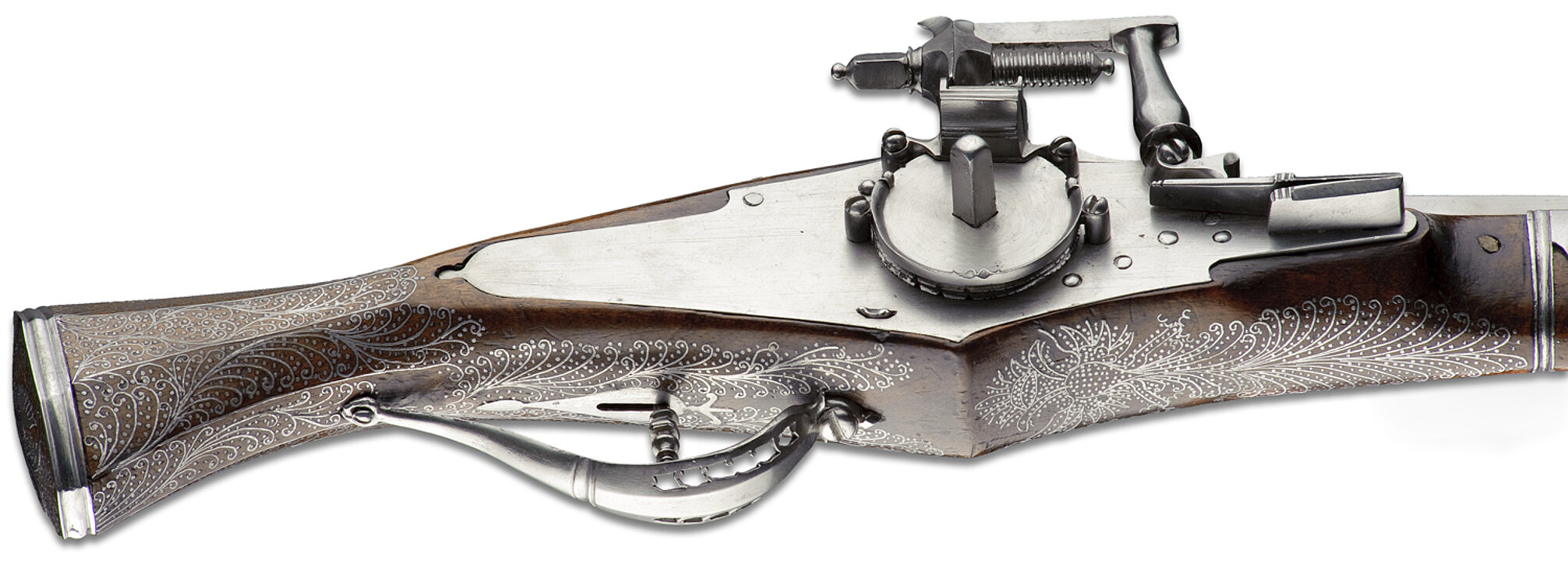In the mid-16th century, gunsmiths from the Netherlands settled in Ferlach, Carinthia, using their extensive technical knowledge to establish a prominent centre of weapon production. In 1638 Hans Schmidt, a talented craftsman and clever businessman, assumed a key position. So the great age of the Ferlach gunsmiths began.
Discover the
Universalmuseum Joanneum
Graz
Styria
Closed

More than 85 animal species from all continents live in the Herberstein Animal World.
Universalmuseum
Joanneum
Back to Universalmuseum Joanneum
Styrian Armoury > Discover > Collection > Fire arms and accessories > Ferlach wheel-lock pistol, around 1640
Ferlach wheel-lock pistol, around 1640
Gunsmith Hans Schmidt (around 1600–1669) and (presumed) barrelsmith Thomas Hönigg (verifiably dated 1638/41)



Image Credits
Born in Riedlingen, Upper Swabia in 1600, Hans Schmidt worked as a gunmaker in Ferlach from 1626 on. He is thought to have first trained as a stockmaker. At the age of just 26 he was commissioned by Archduke Leopold V of Tyrol to produce two guns and two powder flasks. Further orders, such as a walking stick and an ornamented staff, demonstrate that his exquisite work was held in high regard.
Decoration with finely engraved silver plates and inlaid threadsand pins made of silver or iron are typical of his work. This technique was used by gunmakers as early as around 1600 in Paris for Louis XIII and around 1620 by master gunmakers in Germany.
Beyond this, Schmidt also understood the techniques of locking mechanisms and of barrelsmithing. A document from 1636 records that the Carinthian estates appointed the “honourable, skilful” Hans Schmidt as the “true” officer and master fitter of the barrel hammer and rifle workshop. He oversaw master gunsmiths, barrelsmiths and stock-makers as well as their journeymen and apprentices.
Two years later, Siegmund Ludwig Count of Dietrichstein engaged the “master fitter” to inspect all of the products made by the master craftsmen settled on his manor. All of the goods had to be marked with the coat of arms of the lord of the manor, Siegmund Ludwig Count of Dietrichstein – two wine knives in a cartouche. Detailed records of this also reveal large deliveries of pistols and carbines to the Graz armoury. In 1656, Emperor Ferdinand III awarded Hans Schmidt the noble title of “von und zu Helding”. His works are among the best European handguns of the 17th century.


















